Hardware Agnostic Graphics Library for Embedded
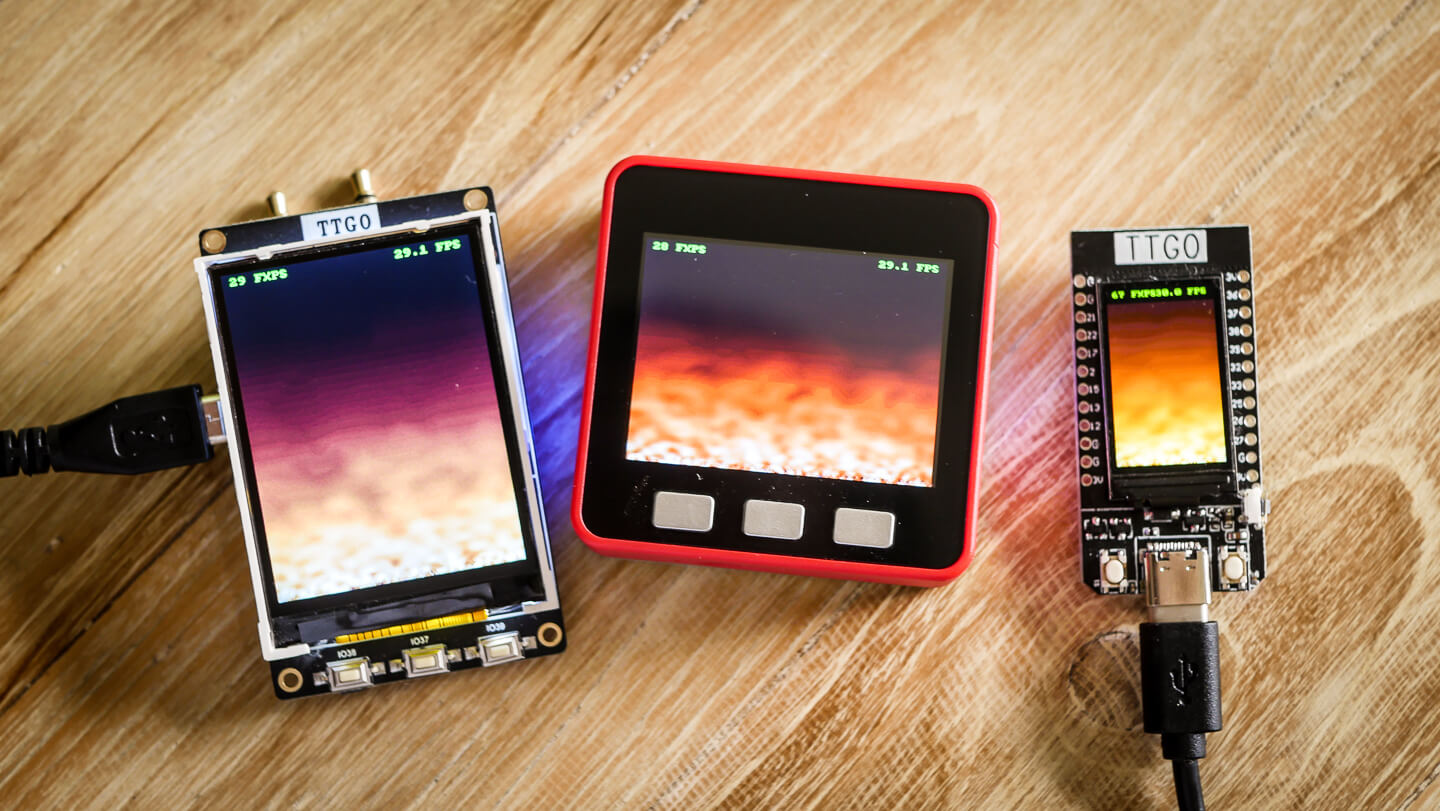
What started as a project to learn C, I have now been using in all my hobby projects. HAGL is a hardware agnostic graphics library for embedded projects. It supports basic geometric primitives, bitmaps, blitting, fixed width fonts and an optional framebuffer.
Yet another graphics library?
Most embedded hobbyist projects do not seem to care about code reuse. Instead there is a graphics library for every different display driver for every different architecture. They all implement the same functions for drawing the graphical primitives This feels wrong. Graphics library should not know anything about the underlying hardware, responsibilities should be separated.
HAGL takes a different approach. It contains code only for drawing the primitives. It can be used with any microcontroller and display driver. It can also be used with normal computers. This is useful for testing your graphics code without need to flash it to the microcontroller.
Hardware abstraction layer
To use Copepod with your microcontroller and display driver you must provide a HAL. The only mandatory function for HAL to provide is for putting a single pixel on the display. Copepod will use the putpixel funtion to draw all the other graphical primitives. For examples of this see libgd HAL and libsdl2 HAL.
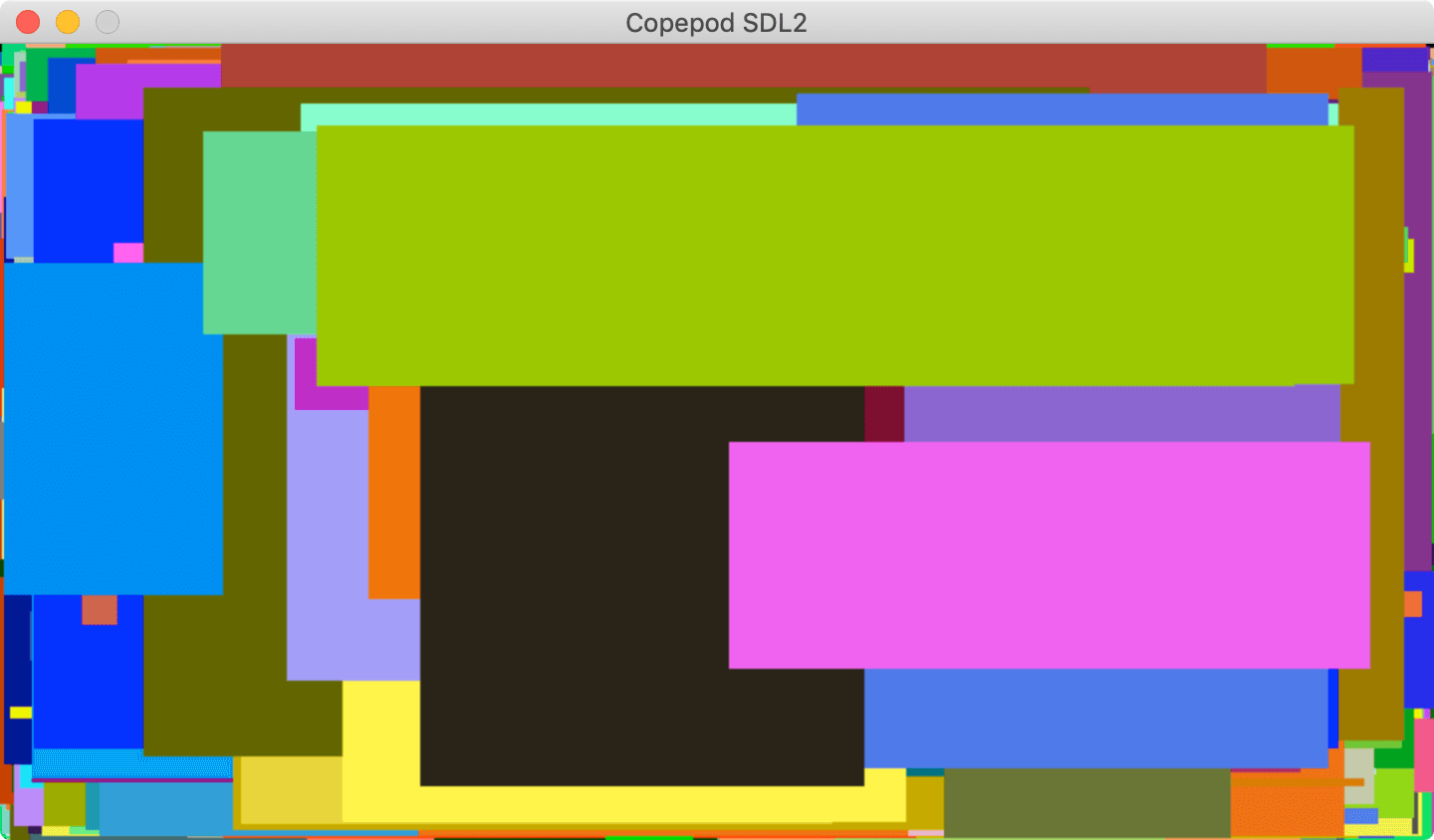
For improved speed the HAL can also provide accelerated functions for bitmap blitting and horizontal and vertical lines. See ESP MIPI DCS HAL for an example of a hardware accelerated HAL. This is also the one I use with my ESP32 projects. It supports most of the displays hobbyists currently use.
How fast is it?
Speed mostly depends on two things. Everything is much faster when double buffering is enabled. Also the HAL implementation dictates a lot. I have been testing with the TTGO T-Display, TTGO T4, M5StickC and M5Stack.
NOTE! Links above are affiliate links. If you buy something I will be a happy puppy.
In the below table numbers are operations per second with double buffering. ESP32 is clocked at the default 160MHz. Bigger number is better. T-Display and M5StickC have higher numbers because they have smaller resolution. Smaller resolution means less bytes to push to the display.
| T4 | T-Display | M5Stack | M5StickC | |
|---|---|---|---|---|
| hagl_put_pixel() | 304400 | 304585 | 340850 | 317094 |
| hagl_draw_line() | 10485 | 14942 | 12145 | 31293 |
| hagl_draw_circle() | 15784 | 16430 | 17730 | 18928 |
| hagl_fill_circle() | 8712 | 9344 | 9982 | 13910 |
| hagl_draw_ellipse() | 8187 | 8642 | 9168 | 10019 |
| hagl_fill_ellipse() | 3132 | 3457 | 3605 | 5590 |
| hagl_draw_triangle() | 3581 | 5137 | 4160 | 11186 |
| hagl_fill_triangle() | 1246 | 1993 | 1654 | 6119 |
| hagl_draw_rectangle() | 22759 | 30174 | 26910 | 64259 |
| hagl_fill_rectangle() | 2191 | 4849 | 2487 | 16146 |
| hagl_draw_rounded_rectangle() | 17660 | 21993 | 20736 | 39102 |
| hagl_fill_rounded_rectangle() | 2059 | 4446 | 2313 | 13270 |
| hagl_draw_polygon() | 2155 | 3096 | 2494 | 6763 |
| hagl_fill_polygon() | 692 | 1081 | 938 | 3295 |
| hagl_put_char() | 29457 | 29131 | 32429 | 27569 |
| hagl_flush() | 32 | 76 | 32 | 96 |
When double buffering is disabled everything is much slower. On the positive side you save lots of memory.
| T4 | T-Display | M5Stack | M5StickC | |
|---|---|---|---|---|
| hagl_put_pixel() | 16041 | 15252 | 16044 | 24067 |
| hagl_draw_line() | 113 | 172 | 112 | 289 |
| hagl_draw_circle() | 148 | 173 | 145 | 230 |
| hagl_fill_circle() | 264 | 278 | 261 | 341 |
| hagl_draw_ellipse() | 84 | 103 | 85 | 179 |
| hagl_fill_ellipse() | 114 | 128 | 116 | 191 |
| hagl_draw_triangle() | 37 | 54 | 37 | 114 |
| hagl_fill_triangle() | 72 | 111 | 72 | 371 |
| hagl_draw_rectangle() | 2378 | 2481 | 2374 | 3482 |
| hagl_fill_rectangle() | 91 | 146 | 91 | 454 |
| hagl_draw_rounded_rectangle() | 458 | 535 | 459 | 808 |
| hagl_fill_rounded_rectangle() | 87 | 139 | 79 | 400 |
| hagl_draw_polygon() | 21 | 33 | 19 | 71 |
| hagl_fill_polygon() | 43 | 66 | 49 | 228 |
| hagl_put_char) | 4957 | 4264 | 4440 | 2474 |
| hagl_flush() | x | x | x | x |
You can run the speed tests yourself by checking out the speedtest repository.
Graphical functions
The function calls themselves should be pretty self explanatory. Most of them take coordinates and a RGB565 color. Out of bounds coordinates are clipped to the current display.
Put a pixel
for (uint32_t i = 1; i < 100000; i++) {
int16_t x0 = rand() % DISPLAY_WIDTH;
int16_t y0 = rand() % DISPLAY_HEIGHT;
color_t color = rand() % 0xffff;
hagl_put_pixel(x0, y0, color);
}
![]()
Draw a line
for (uint16_t i = 1; i < 1000; i++) {
int16_t x0 = rand() % DISPLAY_WIDTH;
int16_t y0 = rand() % DISPLAY_HEIGHT;
int16_t x1 = rand() % DISPLAY_WIDTH;
int16_t y1 = rand() % DISPLAY_HEIGHT;
color_t color = rand() % 0xffff;
hagl_draw_line(x0, y0, x1, y1, color);
}
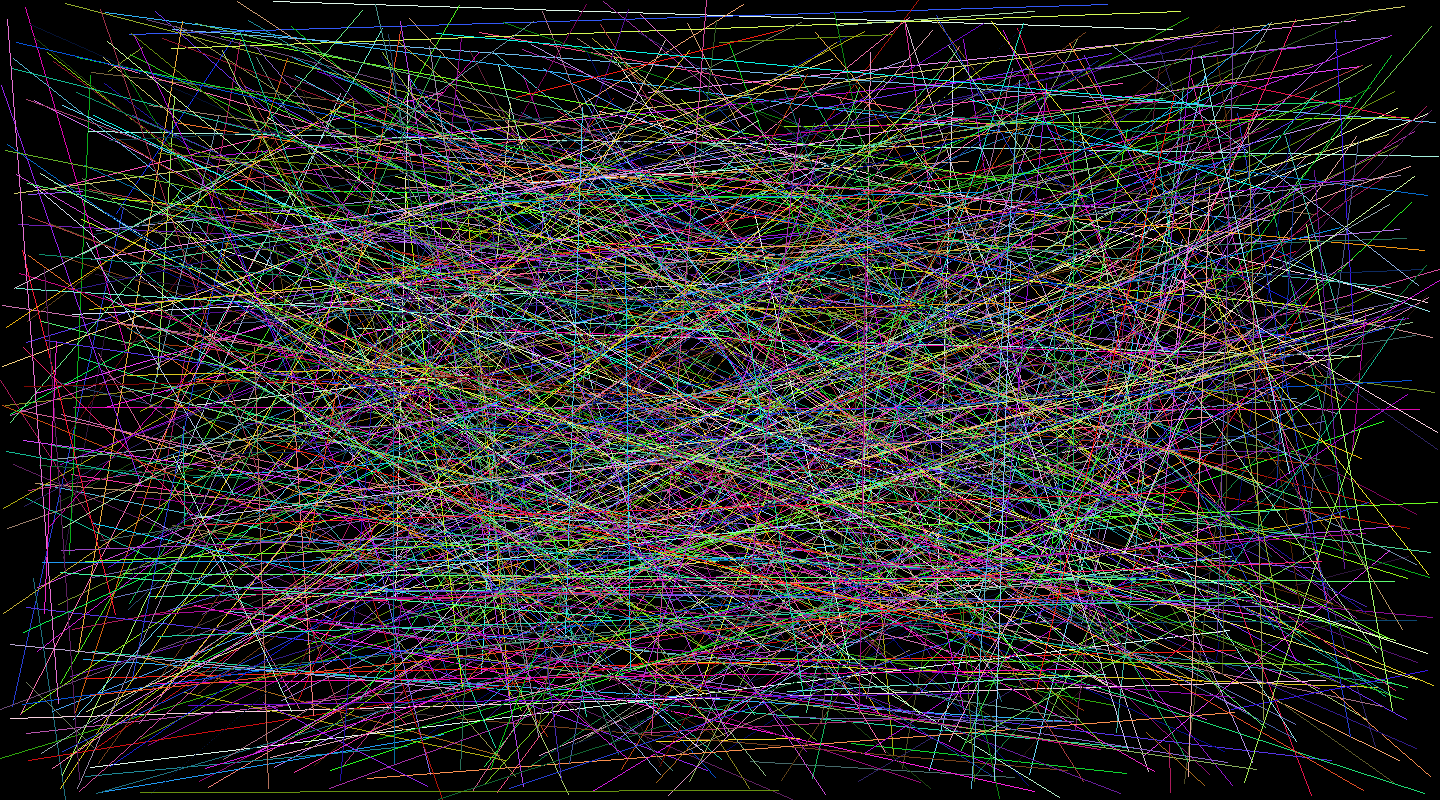
Draw a horizontal line
for (uint16_t i = 1; i < 1000; i++) {
int16_t x0 = rand() % (DISPLAY_WIDTH / 2);
int16_t y0 = rand() % DISPLAY_HEIGHT;
int16_t width = rand() % (DISPLAY_WIDTH - x0);
color_t color = rand() % 0xffff;
hagl_draw_hline(x0, y0, width, color);
}

Draw a vertical line
for (uint16_t i = 1; i < 1000; i++) {
int16_t x0 = rand() % DISPLAY_WIDTH;
int16_t y0 = rand() % (DISPLAY_HEIGHT / 2);
int16_t height = rand() % (DISPLAY_HEIGHT - y0);
color_t color = rand() % 0xffff;
hagl_draw_vline(x0, y0, height, color);
}

Draw a circle
for (uint16_t i = 1; i < 500; i++) {
int16_t x0 = DISPLAY_WIDTH / 2;
int16_t y0 = DISPLAY_HEIGHT / 2;
int16_t radius = rand() % DISPLAY_WIDTH;
color_t color = rand() % 0xffff;
hagl_draw_circle(x0, y0, radius, color);
}
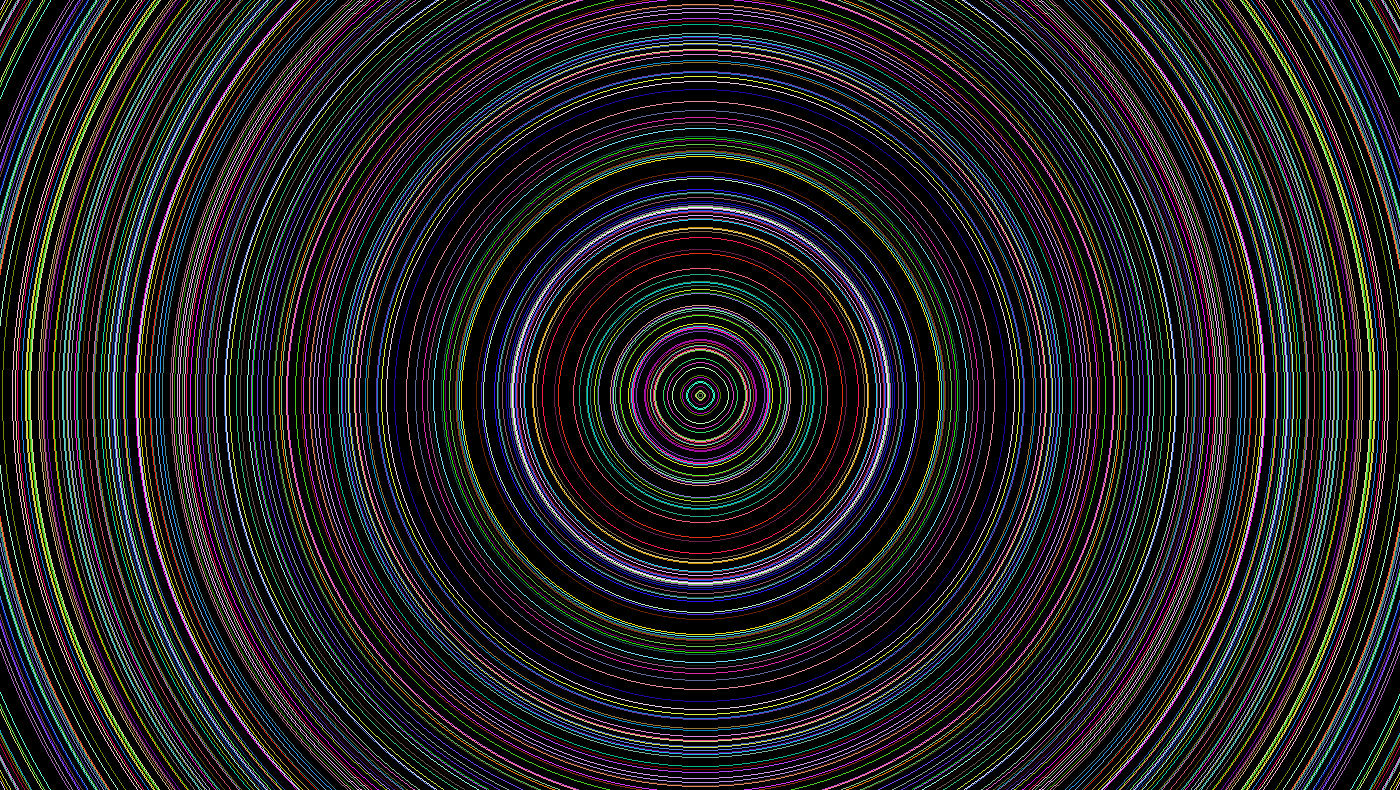
Draw a filled circle
for (uint16_t i = 1; i < 500; i++) {
int16_t x0 = rand() % DISPLAY_WIDTH;
int16_t y0 = rand() % DISPLAY_HEIGHT;
int16_t radius = rand() % 100;
color_t color = rand() % 0xffff;
hagl_fill_circle(x0, y0, radius, color);
}
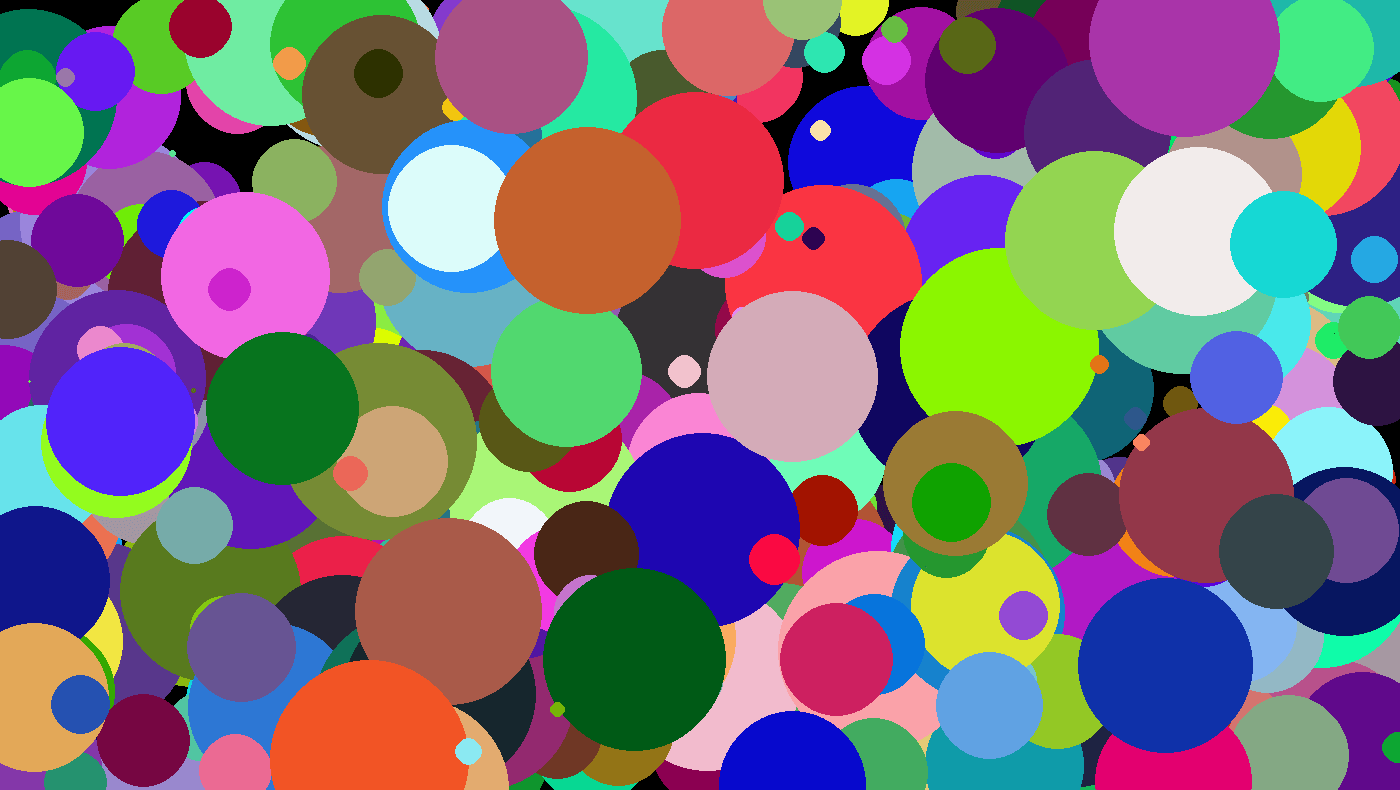
Draw an ellipse
for (uint16_t i = 1; i < 500; i++) {
int16_t x0 = DISPLAY_WIDTH / 2;
int16_t y0 = DISPLAY_HEIGHT / 2;
int16_t rx = rand() % DISPLAY_WIDTH;
int16_t ry = rand() % DISPLAY_HEIGHT;
color_t color = rand() % 0xffff;
hagl_draw_ellipse(x0, y0, rx, ry, color);
}
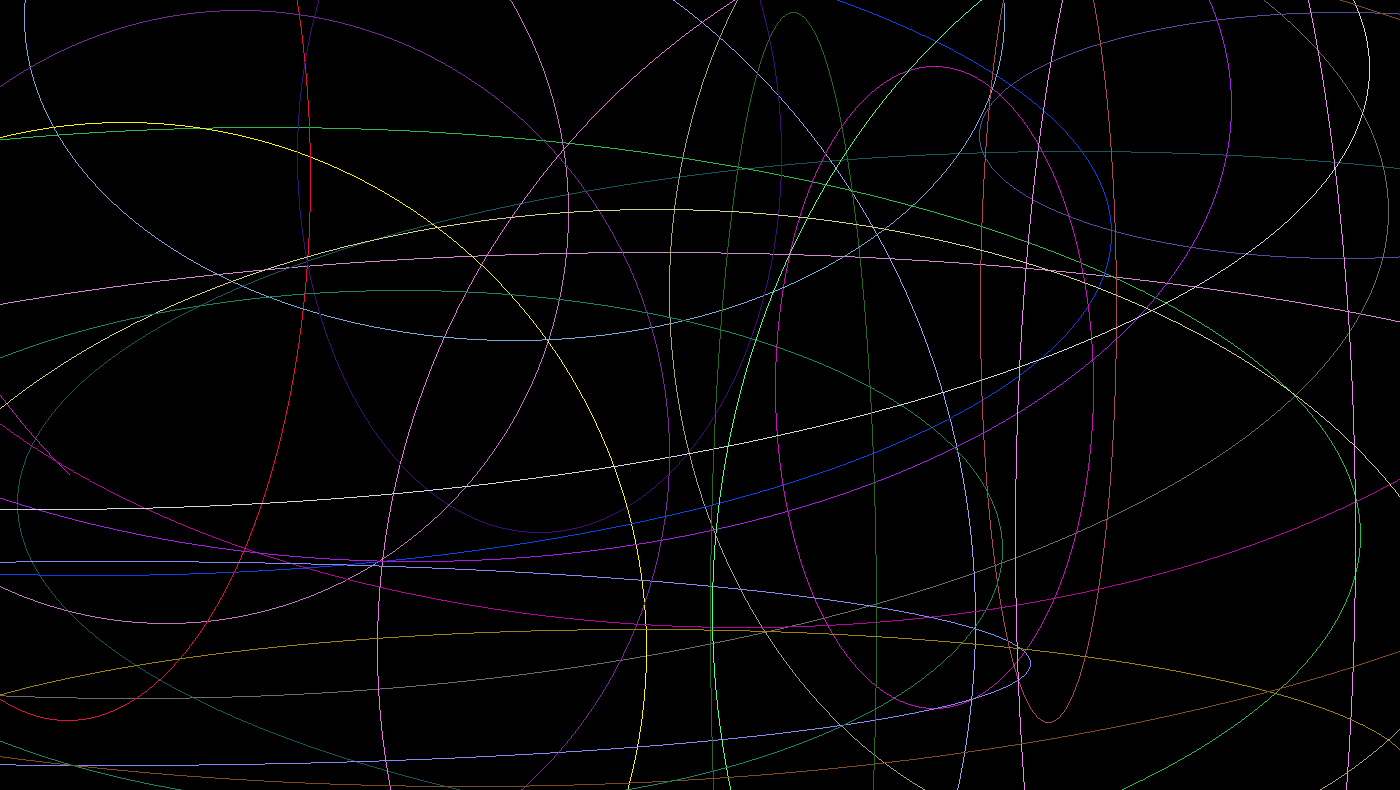
Draw a filled ellipse
for (uint16_t i = 1; i < 500; i++) {
int16_t x0 = rand() % DISPLAY_WIDTH;
int16_t y0 = rand() % DISPLAY_HEIGHT;
int16_t rx = rand() % DISPLAY_WIDTH / 4;
int16_t ry = rand() % DISPLAY_HEIGHT / 4;
color_t color = rand() % 0xffff;
hagl_draw_ellipse(x0, y0, rx, ry, color);
}
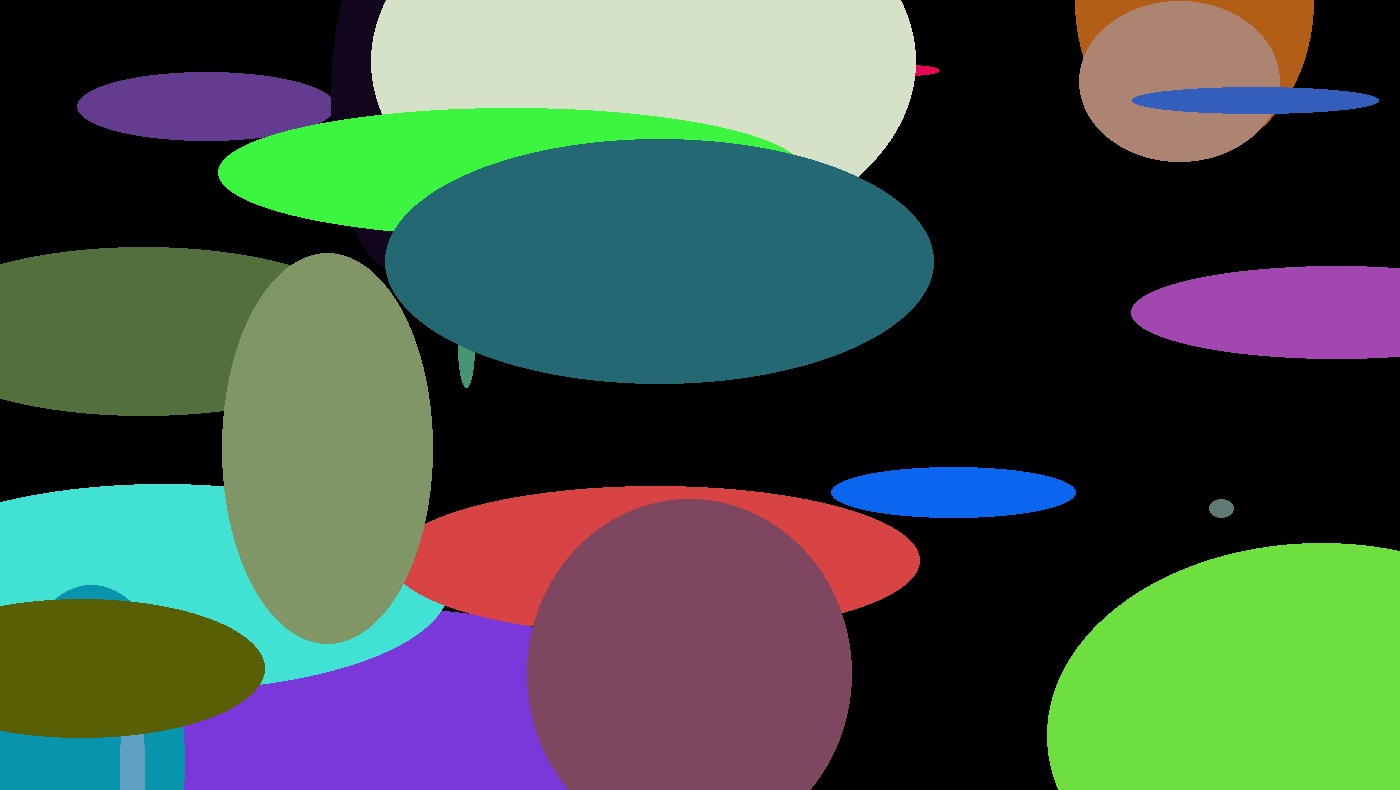
Draw a triangle
int16_t x0 = rand() % DISPLAY_WIDTH;
int16_t y0 = rand() % DISPLAY_HEIGHT;
int16_t x1 = rand() % DISPLAY_WIDTH;
int16_t y1 = rand() % DISPLAY_HEIGHT;
int16_t x2 = rand() % DISPLAY_WIDTH;
int16_t y2 = rand() % DISPLAY_HEIGHT;
color_t color = rand() % 0xffff;
hagl_draw_triangle(x0, y0, x1, y1, x2, y2, color);

Draw a filled triangle
int16_t x0 = rand() % DISPLAY_WIDTH;
int16_t y0 = rand() % DISPLAY_HEIGHT;
int16_t x1 = rand() % DISPLAY_WIDTH;
int16_t y1 = rand() % DISPLAY_HEIGHT;
int16_t x2 = rand() % DISPLAY_WIDTH;
int16_t y2 = rand() % DISPLAY_HEIGHT;
color_t color = rand() % 0xffff;
hagl_fill_triangle(x0, y0, x1, y1, x2, y2, color);
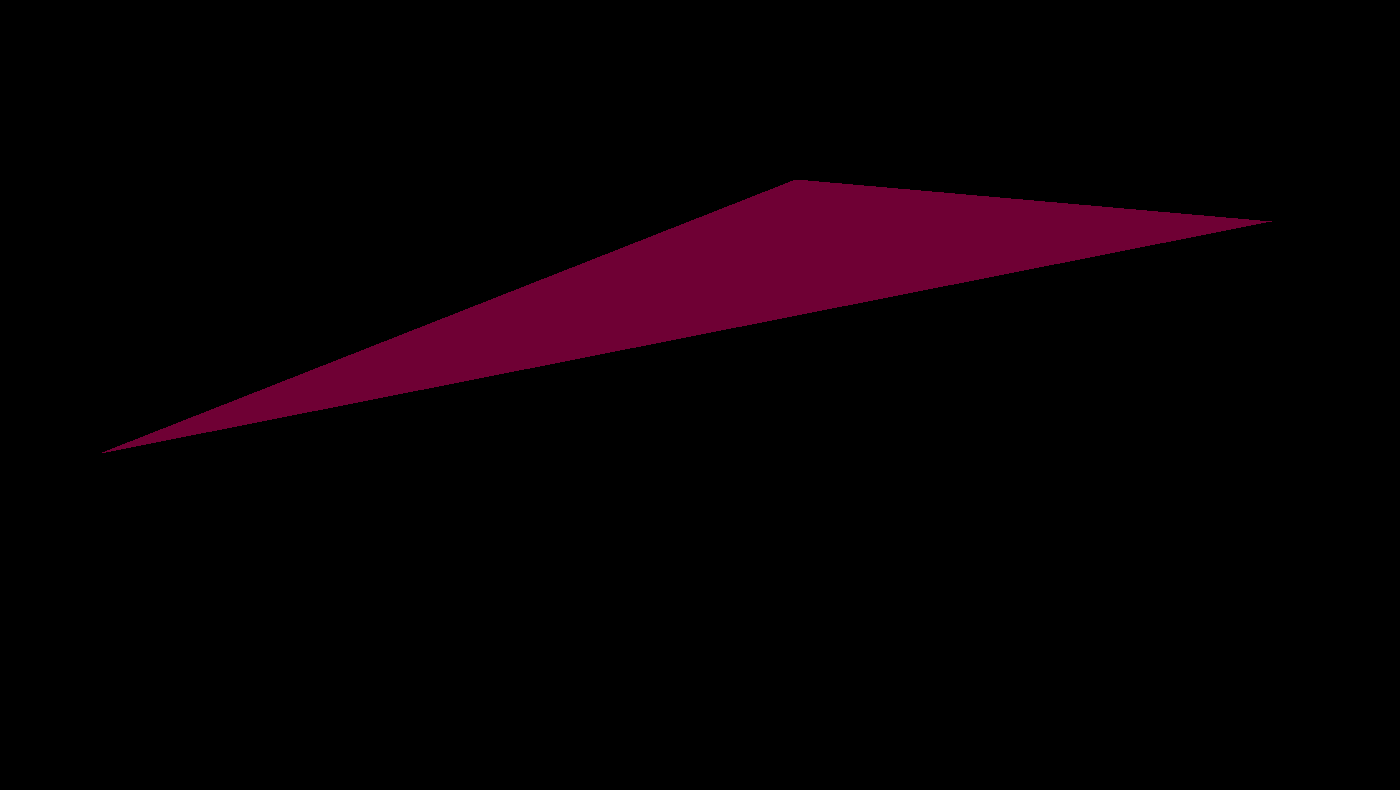
Draw a rectangle
for (uint16_t i = 1; i < 50; i++) {
int16_t x0 = rand() % DISPLAY_WIDTH;
int16_t y0 = rand() % DISPLAY_HEIGHT;
int16_t x1 = rand() % DISPLAY_WIDTH;
int16_t y1 = rand() % DISPLAY_HEIGHT;
color_t color = rand() % 0xffff;
hagl_draw_rectangle(x0, y0, x1, y1, color);
}

Draw a filled rectangle
for (uint16_t i = 1; i < 10; i++) {
int16_t x0 = rand() % DISPLAY_WIDTH;
int16_t y0 = rand() % DISPLAY_HEIGHT;
int16_t x1 = rand() % DISPLAY_WIDTH;
int16_t y1 = rand() % DISPLAY_HEIGHT;
color_t color = rand() % 0xffff;
hagl_fill_rectangle(x0, y0, x1, y1, color);
}

Draw a rounded rectangle
for (uint16_t i = 1; i < 30; i++) {
int16_t x0 = rand() % DISPLAY_WIDTH;
int16_t y0 = rand() % DISPLAY_HEIGHT;
int16_t x1 = rand() % DISPLAY_WIDTH;
int16_t y1 = rand() % DISPLAY_HEIGHT;
int16_t r = 10
color_t color = rand() % 0xffff;
hagl_draw_rounded_rectangle(x0, y0, x1, y1, r, color);
}
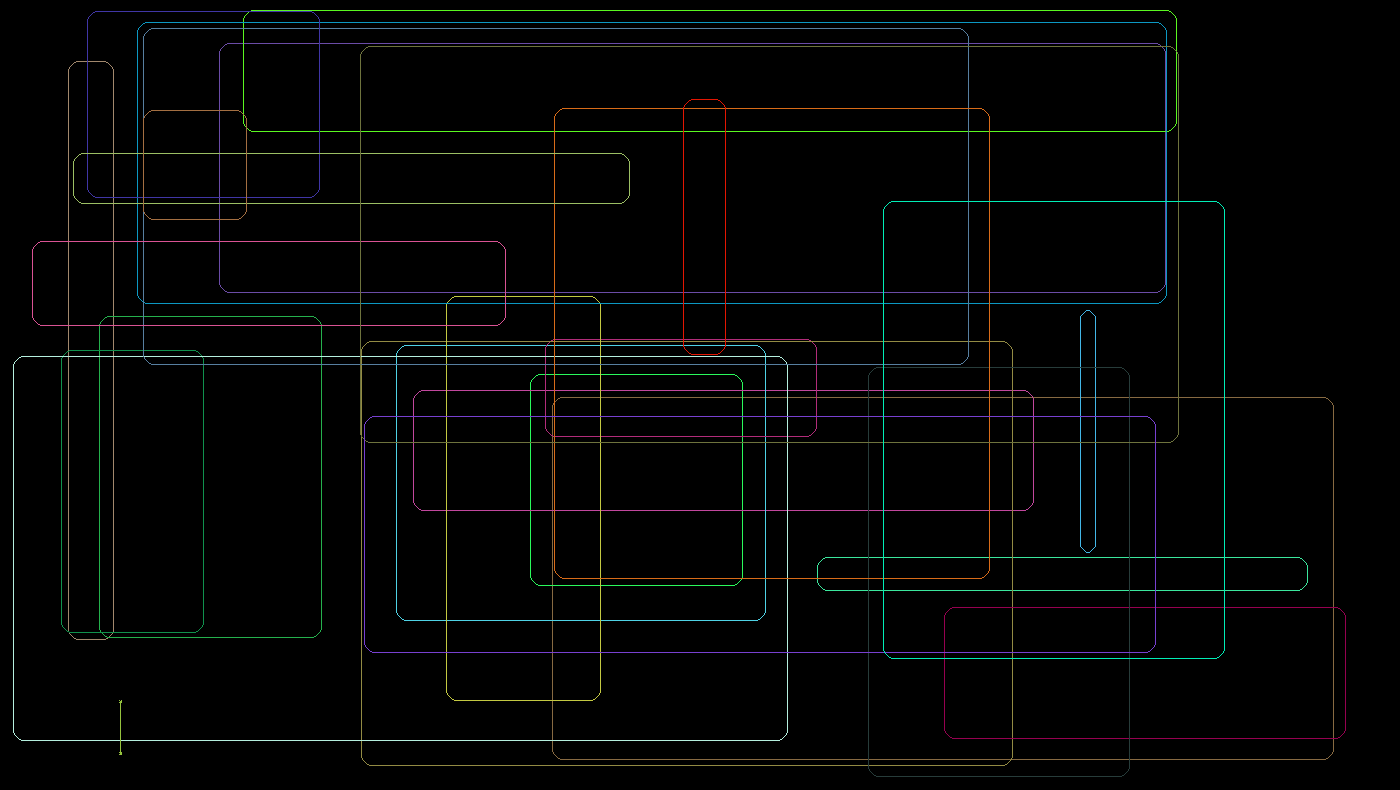
Draw a filled rounded rectangle
for (uint16_t i = 1; i < 30; i++) {
int16_t x0 = rand() % DISPLAY_WIDTH;
int16_t y0 = rand() % DISPLAY_HEIGHT;
int16_t x1 = rand() % DISPLAY_WIDTH;
int16_t y1 = rand() % DISPLAY_HEIGHT;
int16_t r = 10
color_t color = rand() % 0xffff;
hagl_fill_rounded_rectangle(x0, y0, x1, y1, r, color);
}
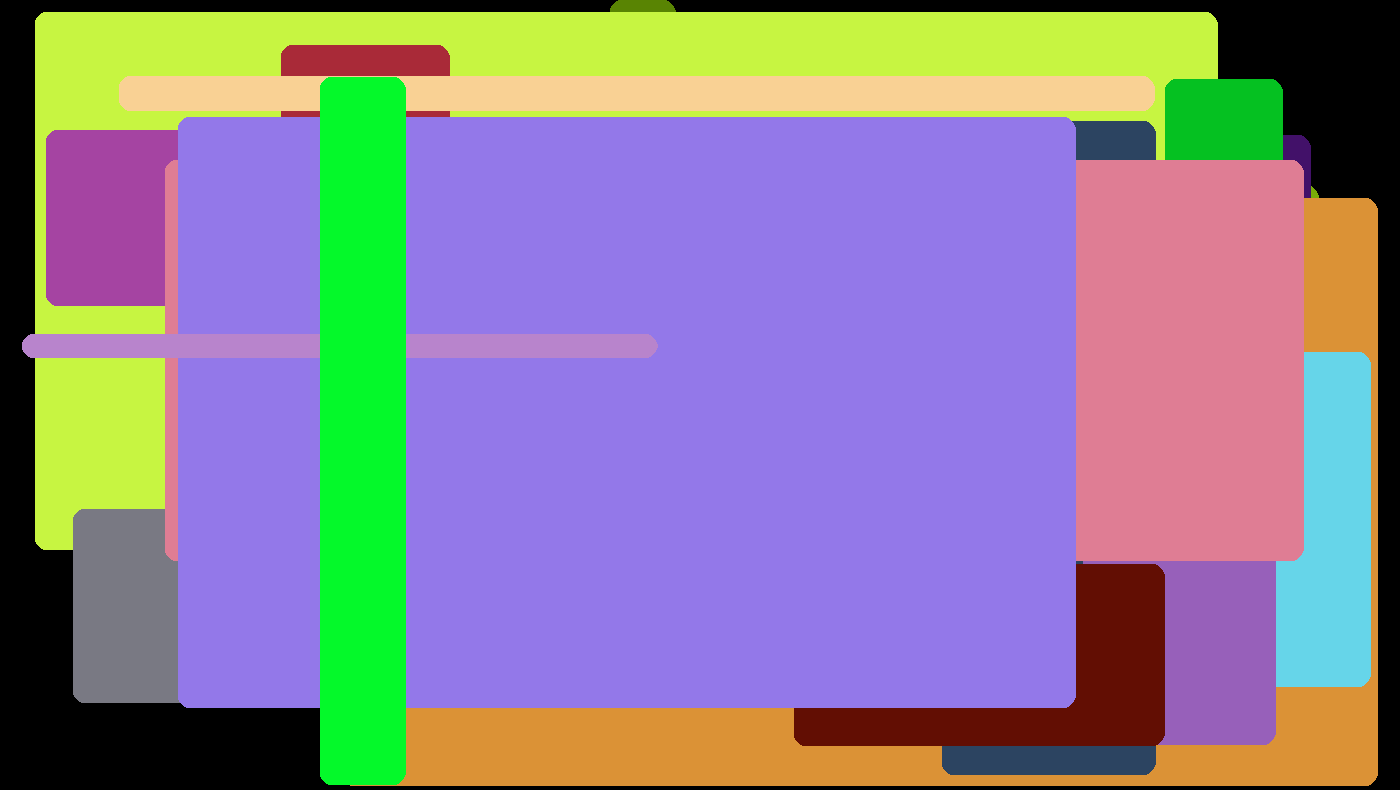
Draw a polygon
You can draw polygons with unlimited number of vertices which are passed as an array. Pass the number of vertices as the first argument.
int16_t x0 = rand() % DISPLAY_WIDTH;
int16_t y0 = rand() % DISPLAY_HEIGHT;
int16_t x1 = rand() % DISPLAY_WIDTH;
int16_t y1 = rand() % DISPLAY_HEIGHT;
int16_t x2 = rand() % DISPLAY_WIDTH;
int16_t y2 = rand() % DISPLAY_HEIGHT;
int16_t x3 = rand() % DISPLAY_WIDTH;
int16_t y3 = rand() % DISPLAY_HEIGHT;
int16_t x4 = rand() % DISPLAY_WIDTH;
int16_t y4 = rand() % DISPLAY_HEIGHT;
color_t color = rand() % 0xffff;
int16_t vertices[10] = {x0, y0, x1, y1, x2, y2, x3, y3, x4, y4};
hagl_draw_polygon(5, vertices, color);
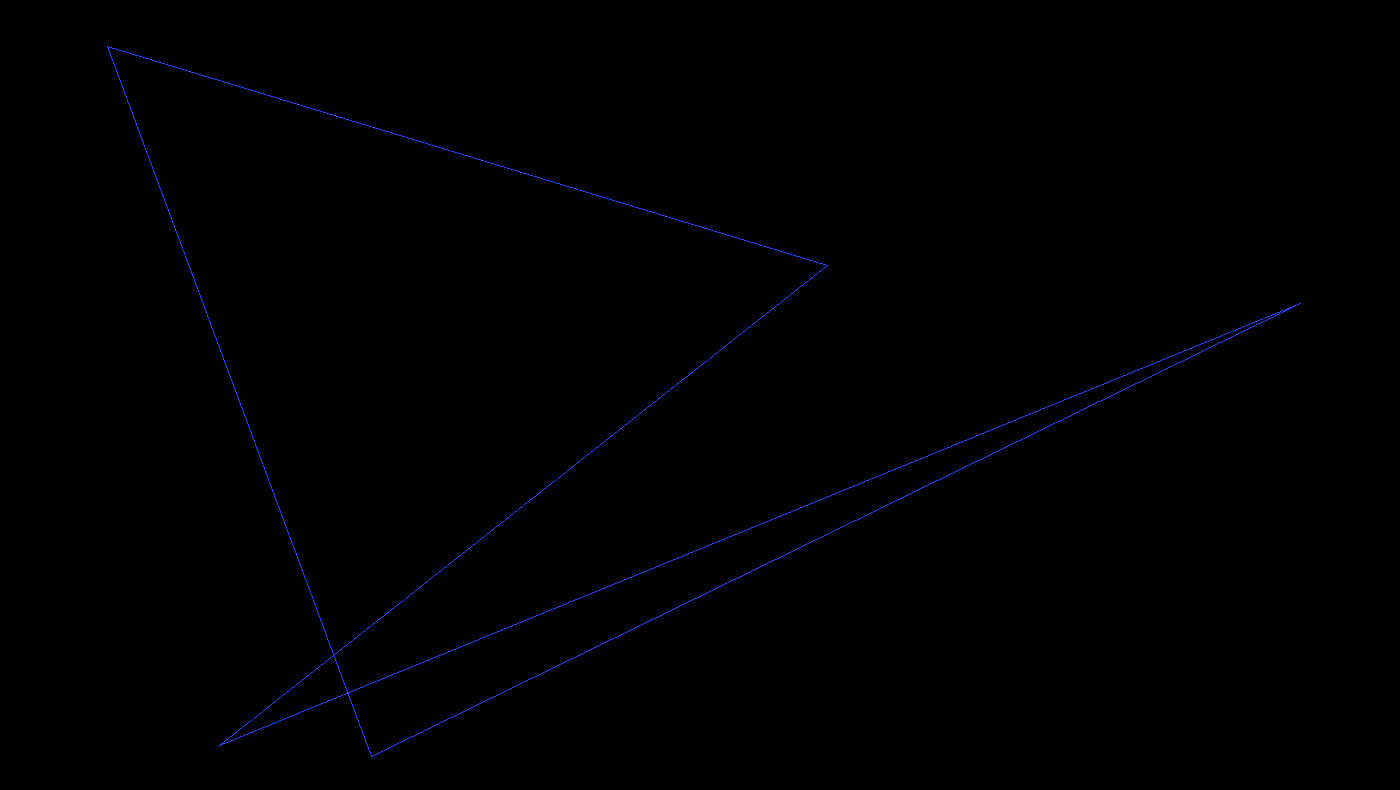
Draw a filled polygon
You can draw filled polygons with up to 64 vertices which are passed as an array. First argument is the number of vertices. Polygon does not have to be concave.
int16_t x0 = rand() % DISPLAY_WIDTH;
int16_t y0 = rand() % DISPLAY_HEIGHT;
int16_t x1 = rand() % DISPLAY_WIDTH;
int16_t y1 = rand() % DISPLAY_HEIGHT;
int16_t x2 = rand() % DISPLAY_WIDTH;
int16_t y2 = rand() % DISPLAY_HEIGHT;
int16_t x3 = rand() % DISPLAY_WIDTH;
int16_t y3 = rand() % DISPLAY_HEIGHT;
int16_t x4 = rand() % DISPLAY_WIDTH;
int16_t y4 = rand() % DISPLAY_HEIGHT;
color_t color = rand() % 0xffff;
int16_t vertices[10] = {x0, y0, x1, y1, x2, y2, x3, y3, x4, y4};
hagl_fill_polygon(5, vertices, color);

The library supports Unicode fonts in fontx format. It only includes three fonts by default. You can find more at tuupola/fonts repository.
Put a single char
for (uint16_t i = 1; i < 10000; i++) {
int16_t x0 = rand() % DISPLAY_WIDTH;
int16_t y0 = rand() % DISPLAY_HEIGHT;
color_t color = rand() % 0xffff;
char ascii = rand() % 127;
hagl_put_char(ascii, x0, y0, color, font8x8);
}

Put a string
The library supports Unicode fonts in fontx format. It only includes three fonts by default. You can find more at tuupola/fonts repository.
for (uint16_t i = 1; i < 10000; i++) {
int16_t x0 = rand() % DISPLAY_WIDTH;
int16_t y0 = rand() % DISPLAY_HEIGHT;
color_t color = rand() % 0xffff;
hagl_put_text("YO! MTV raps.", x0, y0, color, font8x8);
}
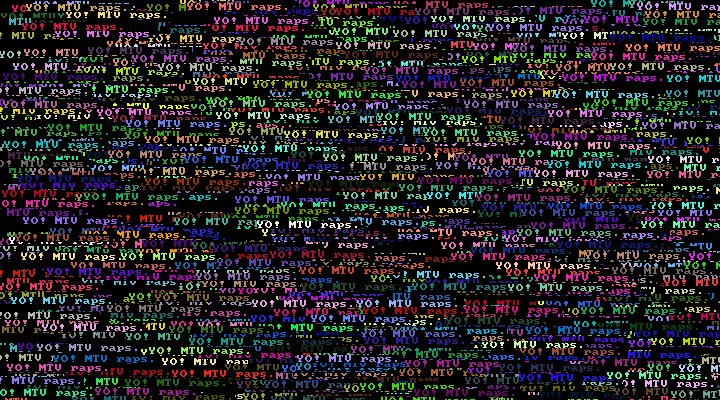
Additional reading
Efficient Polygon Fill Algorithm With C Code Sample by Darel Rex Finley explains the algorithm I used for drawing the filled polygons.
256-Color VGA Programming in C by David Brackeen is an old tutorial on VGA graphics programming for DOS. Many things can still be applied.
The DIYConsole series by Davide Pesce. Even though written for Arduino the article series a great job explaining many of the aspects required for writing a graphics library.
Lode’s Fire Effect Tutorial by Lode Vandevenne shows how to create the old school fire effect shown in the header image. Code for ESP32 can also be found in GitHub.